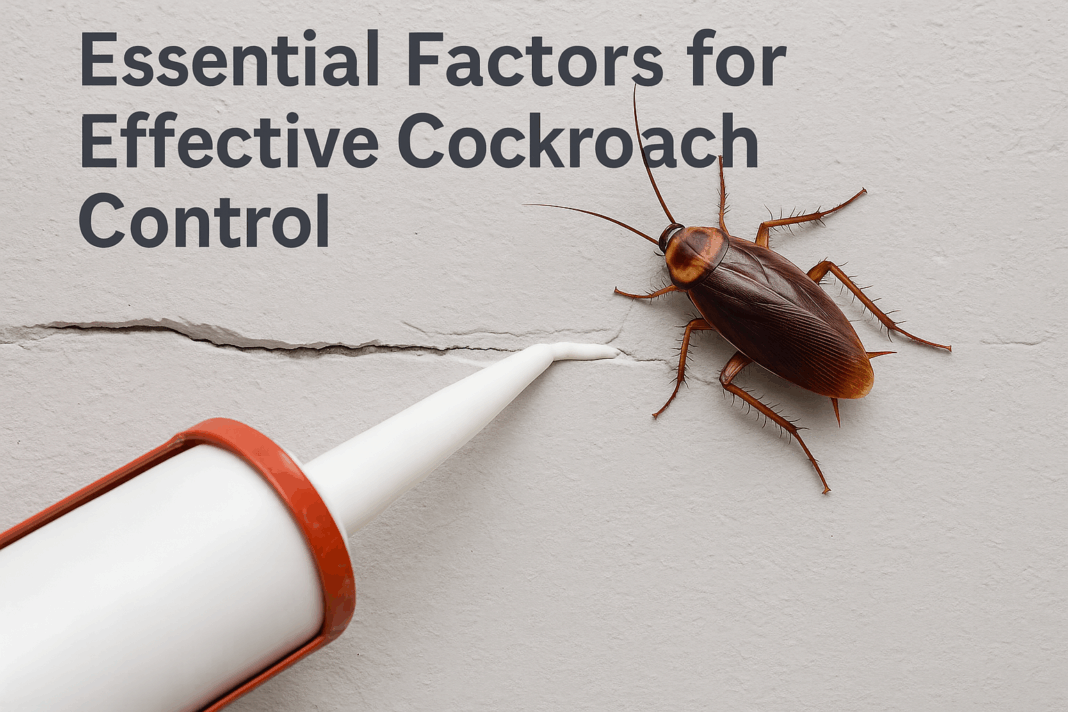Cockroach control is more than just keeping things clean; it’s a vital step in protecting your health and property. These pests are known to carry bacteria, allergens, and pathogens that can cause serious health issues, particularly for children, the elderly, and individuals with compromised immune systems. Left unchecked, a cockroach infestation can quickly spread and lead to food contamination, unpleasant odours, and even damage to your business’s reputation.
For homes and businesses, particularly in high-risk environments such as kitchens, drains, and commercial spaces, taking prompt action is crucial. That’s where professional cockroach pest control in Sydney plays an essential role, ensuring safe and effective treatment tailored to local conditions and infestation levels.
Identifying the Problem Early
Spotting a cockroach problem early makes control much easier. These pests multiply quickly and are adept at hiding, so staying vigilant for signs is crucial.
Key signs of an infestation:
- Droppings that look like ground coffee.
- Egg cases (oothecae) are in cupboards or behind appliances.
- Musty odour in affected areas.
- Shed skins and occasional sightings of live or dead cockroaches.
Common species in homes and businesses:
- German cockroaches: Small and light brown—often in kitchens.
- American cockroaches: Larger and reddish-brown—seen in drains and basements.
- Oriental cockroaches: Dark and usually found in damp areas.
Early detection helps prevent cockroaches from spreading. If you spot any of these signs, it’s best to take action quickly.
Sanitation and Hygiene
Cleanliness plays a major role in cockroach control. These pests are drawn to food scraps, moisture, and clutter, making untidy areas ideal for nesting and feeding.
Key areas to keep clean include:
- Food storage: Seal food in airtight containers and avoid leaving food out overnight.
- Rubbish bins: Use bins with tight-fitting lids and empty them regularly.
- Drains: Keep sinks and drains clear of grease and food residue.
- Pet feeding areas: Clean up leftover pet food and wash bowls daily.
Regular cleaning not only removes food sources but also exposes hiding spots, helping to break the cockroach life cycle. Good hygiene habits are essential for both preventing and managing infestations.
Sealing Entry Points
Cockroaches often enter through small gaps and cracks you might not even notice. Blocking these entryways is a key step in preventing an infestation.
Common access points include:
- Cracks in walls and floors
- Gaps around pipes and drains
- Vents and utility openings
To reduce the risk, seal holes in walls, install door sweeps, and close gaps around windows. Use weather stripping for doors and mesh screens over vents and drains to block their path.
A well-sealed property makes it much harder for cockroaches to get inside and start nesting.
5. Reducing Hiding Spots
Cockroaches are nocturnal and love dark, undisturbed spaces where they can hide and breed. Cluttered areas make the perfect nesting spots, especially in kitchens, bathrooms, and storage zones.
To limit Their Hiding Places:
- Declutter cupboards, shelves, and under-sink areas.
- Dispose of old cardboard boxes and newspapers; these absorb moisture and offer ideal shelter.
- Store items in sealed plastic containers rather than paper or fabric.
By keeping spaces tidy and organised, you reduce the chances of cockroaches settling in. Pairing these steps with regular cleaning and Pest Control Sydney services ensures a stronger defence against infestations.
DIY Control Methods
DIY solutions can help with minor infestations but often fall short for larger problems. Common tools include:
- Baits and traps: Useful for monitoring and reducing numbers.
- Sprays: Can offer temporary relief, especially when applied in hiding spots.
- Natural repellents: Items like bay leaves, peppermint oil, and citrus peels are popular, but their effectiveness is limited.
While these methods may provide short-term relief, they don’t address the root of the infestation. DIY control is best used as a temporary measure or alongside professional treatment.
When to Call a Professional
If cockroaches keep returning despite your efforts, it’s time to call in the experts. Professional pest control services assess the severity of the infestation, locate nesting sites, and apply targeted treatments.
Benefits include:
- Safe, effective, and long-lasting solutions
- Use of professional-grade treatments
- Advice on preventing future infestations
During a visit, technicians will inspect the property, treat key areas, and suggest follow-up actions. For ongoing issues, especially in commercial settings, professional Pest Control services are often the most reliable solution.
Preventive Measures After Treatment
After treatment, consistent maintenance is essential to prevent recurrence.
Helpful Maintenance Tips:
- Clean regularly and remove food scraps quickly
- Fix water leaks to reduce moisture.
- Seal new gaps or cracks
Scheduling routine inspections and staying vigilant for early signs can make a significant difference. Whether it’s a home or business, the owner’s role in maintaining hygiene and repairs is key to long-term cockroach control.
Conclusion
Cockroach control starts with early detection, proper hygiene, and blocking entry points. While DIY methods help, long-term protection often needs expert support. For safe and reliable results, consider professional Pest Control services. A proactive approach keeps your space healthy and pest-free.



